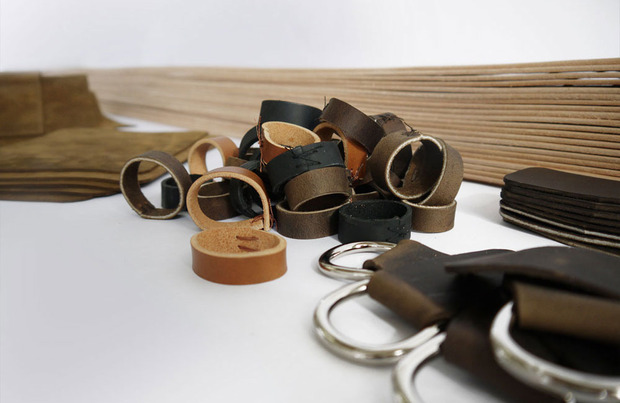Studio Visit: basäder
The Brooklyn-based duo explains how they handcraft lifetime leather bags at approachable prices

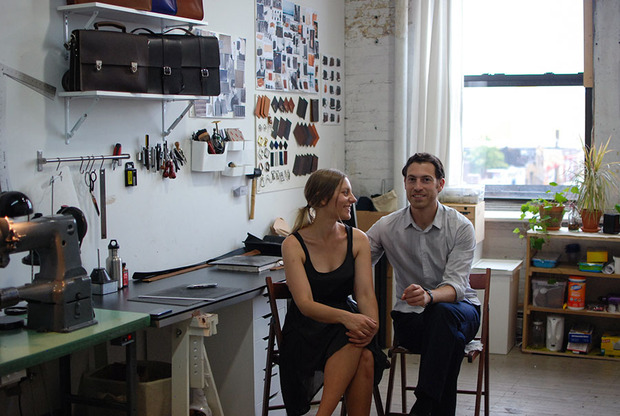
In the industrial business zone of East Williamsburg, Elin Johansson and Philip Antonelli (with the help of their college student assistant, Claire) squeeze into a space of 400 square feet—and that’s not including the childrenswear designer who shares the other half. The couple started basäder exactly one year ago, and have achieved a feat that, in theory, sounds impossible: Johansson assembles (by hand) original leather bags using domestically sourced, highest quality leather, entirely out of their Brooklyn studio, for the remarkable price range of $240 to $330. Every bag is guaranteed for life, with basäder almost always granting requests from customers for specific details and sizing.

A vintage industrial Singer cylinder needle feed (one of the few sewing machines that can sew thick leather) sits in one corner and a knitting machine in the other. Leather working tools and various inspiration boards adorn the walls but for the most part, the room is simply furnished and holds only the necessary tools to build a bag from scratch. This minimal production space interweaves the traditional with the contemporary, a vision that becomes manifested through their cleanly designed bags. Tired of the never-ending cycle of disposable and immoderately marked-up goods in the fashion industry, basäder is driven by a mission to create attainable lasting work.
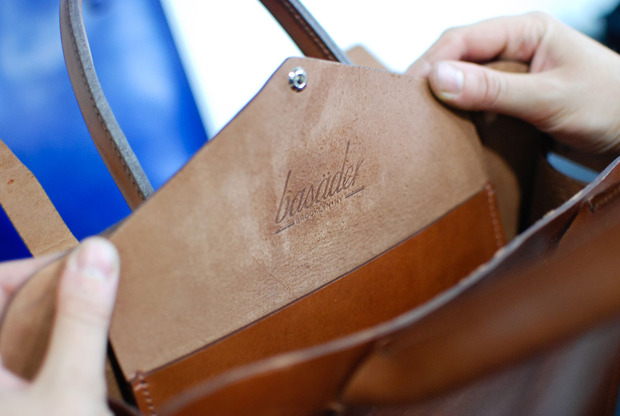
The name basäder pays homage to one of their biggest influences, Dutch minimalist artist Bas Jan Ader. “We didn’t want to have a name that meant something; that people could immediately associate with something else,” explains Johansson. “And it sounded just Swedish enough,” Philip chimes in, laughing. Describing their philosophy, Antonelli says, “It’s very ‘romanticized minimalism.’ Ader’s last piece was setting to out to sea in a little schooner. He knew he was going to die doing it, crossing the Atlantic—that was literally his last piece.” Upholding this minimal aesthetic, the basäder logo is invisible from the outside, and tucked away.
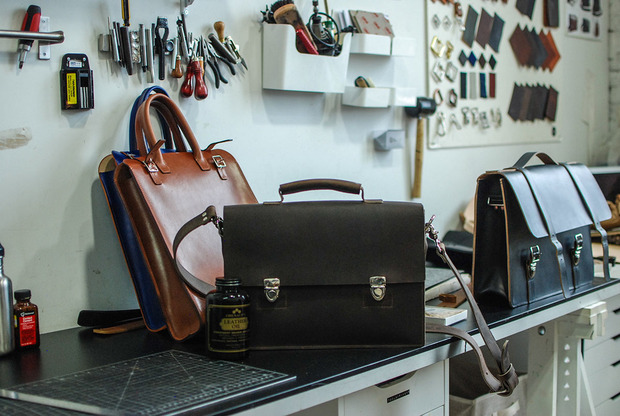
Johansson recently took a risk to pursue her passions. Leaving the very small town Östansjö, Sweden when she was 19 years old, she studied at the Fashion Institute of Technology in New York, and met Rhode Island-raised Antonelli through mutual friends while in college. They transitioned smoothly into the fashion industry, with Antonelli doing online marketing for a large jewelry manufacturer and Johansson landing a full-time job as a designer at Ralph Lauren after a stint at Helmut Lang. Their daily commute from Greenpoint, Brooklyn to midtown Manhattan provided abundant amounts of time to discuss their aspirations. “One day on the train, Philip said, ‘Why can’t you make bags? I can’t find a bag I want. You should be able to make a beautiful bag,'” Johansson recalls. “I never had made a bag in my life. I specialized in knitwear but had a long seamstress background. I’ve been always sewing a lot since I was a child and making with my hands—that’s what I love to do.”
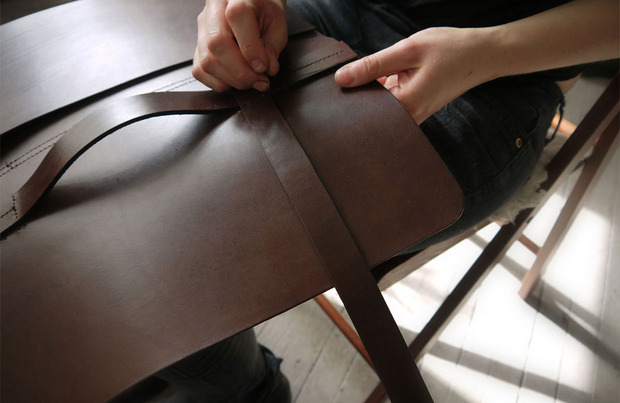
Once Antonelli had incepted the idea, Johanssan began to study how to craft bags—buying tools and experimenting, doing market research and learning all she could about leather. Her dedication paid off: Opening their Etsy store with only two bags, the reception was overwhelmingly popular enough for Johanssan to quit her job and expand the basäder collection.
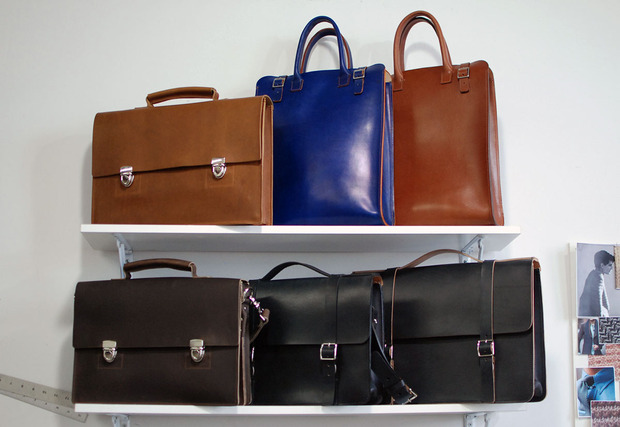
One fortunate experience Johanssan gained at Ralph Lauren was discovering her love of menswear. “I’ve never really been inspired by menswear until I had to design for men. Now everything is menswear-inspired, even if I were to make women’s handbags and accessories.” This philosophy starts at basäder’s inspiration boards, which feature mostly male models, the occasional tomboy-esque lady and classic leather bag designs, down to the purposely unisex end-product. “You can’t tell if it’s for women or for men,” she describes. “It’s always been very hard for me to find a bag for myself—it’s just not clean enough or it has too much of a feminine look to it.” From a fashion design front, the couple cites Maison Martin Margiela and Jil Sander as conceptual influence for their timeless, minimal look.
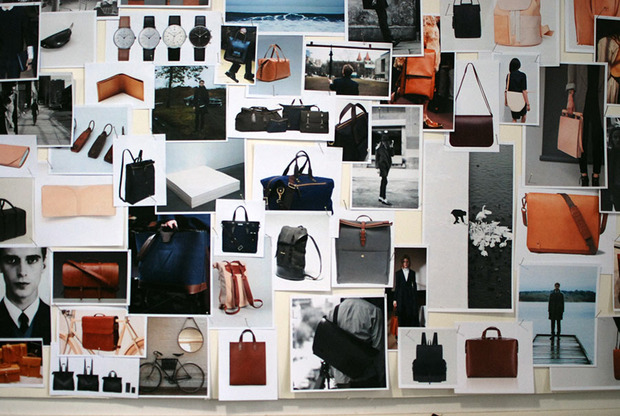
The inspiration boards also include a familiar Cool Hunting favorite: Shinola watches and leather goods. “We really look up to Shinola. We don’t do watchbands yet, so the watches are on the board to create a mood and style of the customer,” explains Johansson. Antonelli adds, “They source their leather from Horween, the same leather that we want to use. All of our leather, including the vegetable-tanned leather, comes from farms and tanneries all over America, but just about now, we’re trying to consolidate to one, Horween, in Chicago.” The couple esteem Shinola, and other brands like Allen Edmonds, for starting their production in-house and building a company from there. “With Shinola, we love that they are investing in and sourcing from the local [Detroit] community. As a larger company, we’re just amazed that Allen Edmonds still finds a way to be relevant. Even their shoe repair service is top notch.”
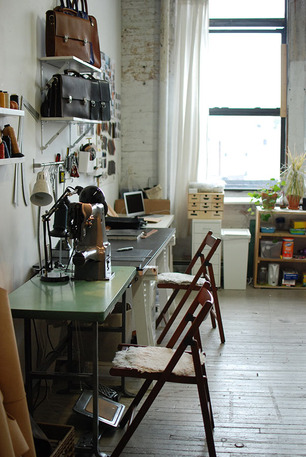
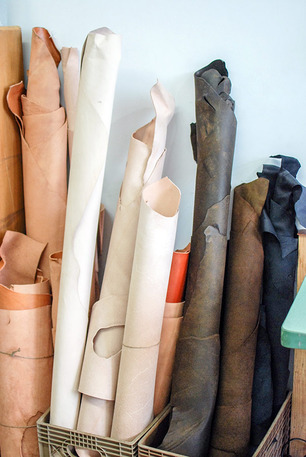
Johansson relates a story that reveals the harsher reality: “My first job was actually for a designer in this building, coincidentally. She was a small designer, just by herself, just like this—but she produced in China. Because that’s the way you think you do it, that’s the way you’re taught in school to do it—that’s why I came with that mindset of ‘This is how you start a business: You make your connections, and you find your sources in China and your factories.'” With their basäder bags, the two designers demonstrate that out-sourcing isn’t the only path to take, and join the movement that’s proving high-quality, made-in-America and durability can all be synonymous with affordability.
Antonelli reasons, “At the end of the day, from my experience (and I’m not predicting anything new), the need to sell through a major retail chain and mark up prices 300% is no longer the only selling option for high-end goods. Living in the middle of maker culture and dealing directly with various high-end marketplaces, I think this was an inevitable realization for us. With an ever-growing list of online selling channels such as Etsy, theCools, Boticca and e-commerce social curation tools like Pinterest,
Svpply and Spootnik, small designers can bring something much better to market, sell direct and, in the process, promote attainable lifetime goods over slightly lower-priced disposable ones.”
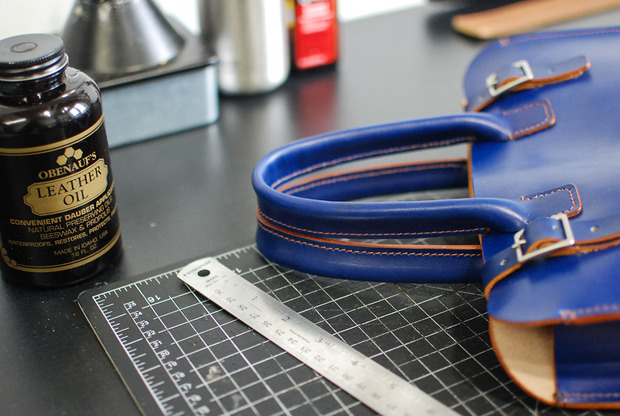
It takes Johansson one to two weeks to complete a bag; a major task is laboriously dyeing the leather by hand—leaving the outside sleek and rigid but the underside raw. Explaining how their bags are so durable, Johansson says, “We use full-grain leather. It’s the highest quality leather that you can use, leather that’s been untouched so you still have scars, scratches, little marks, everything on it. Imagine you taking the first layer of your skin off—it’s lower quality, so you want to keep all of that on.” While Johansson is stitching, waxing, treating and polishing, Antonelli converses with the customer throughout the entire process. “It can go on for 40-50 emails back and forth. They want certain sizes, sometimes even down to a specific edge color—which I get because I am the same way! If I was making an investment, I would want some of the specifics worked out.”
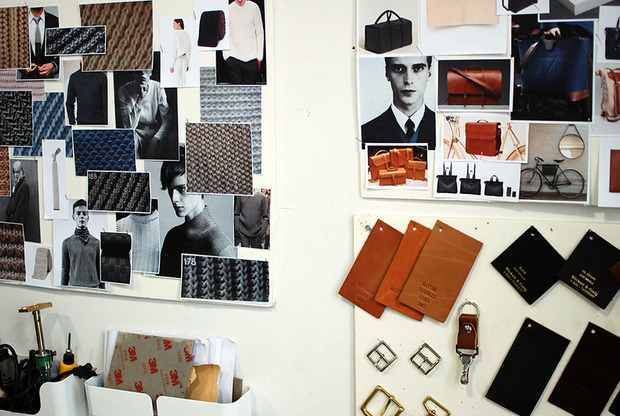
The next steps for basäder are finding a just-as-sturdy sustainable leather alternative. They’ve experimented with cork fabric and vegan leather, but found that durability was compromised. The duo continually do research, placing their bets on trees or latex. Their newest inspiration board—covered with different knit patterns—also gives a peek into the future. “We have interest in making ties and beautiful scarves that work with our bags and our aesthetic,” says Johansson. “We want to start to very, very slowly but we don’t want to be just a leather bag company.”
Basäder handmade leather bags and belts are available on their website and their Etsy store. Bags range from $240-$330 and custom requests are considered. Every customer receives a keychain made from the same leather as the bag they purchased and a sample of Obenauf’s Heavy Duty Leather Protectant.
Images by Nara Shin, images of hand-stitching and looped pieces courtesy of basäder.
